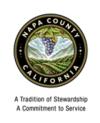Vineyard Mealybugs
Updates on grape and vine mealybug development in Napa County vineyards
| Issue | Articles | Type | Date Added |
|---|---|---|---|
| Virtual Vertebrate Pest Council Webinars! | Join us for the first virtual Vertebrate Pest Council Webinars! Tuesday, March 30, 2021-Register here.
Wednesday, March 31, 2021-Register here.
Thursday April 1, 2021-Register here.
See attached event flyer for additional details. | 2/26/21 | |
| Mechanical Canopy Management Demo, Friday, May 10, 2019 | FREE Mechanical Canopy Management & Trunk Suckering Demonstration Friday, May 10, 2019, 9 am – 11 am We will demonstrate how to capture vineyard variability via canopy reflectance, turn it into useful knowledge, and then manage canopies at a variable rate. The demonstration will start at 9:00 am and will wrap up at 11:00 am. There is no cost to attend. | 5/7/19 | |
| Vine mealybug management and FAQs | The Napa County Wine grape Pest & Disease Control District sponsored a seminar on vine mealybug (VMB) on February 25. We discussed VMB detection, biology and management. As a follow-up, this article summarizes significant points from the day, focusing on issues that are of particular concern for management of VMB, and also addresses FAQs. | 3/16/15 | |
| Vine mealybug update | Vine mealybug was monitored at a Carneros vineyard on April 29, 2014. This edition of the UCCE-Napa County VMB newsletter contains: Update on VMB populations Male VMB flight Photo documentation of biological control with Anagyrus pseudococci Photo guide to identification of various VMB life stages | 5/1/14 | |
| Grape Mealybug Update | On Monday, March 24, I monitored grape mealybug populations at a vineyard in Oakville. I found 1st and 2nd instar nymphs on one year old wood. No GMB nymphs were found on the permanent wood or on leaves. Sampling techniques for GMB are demonstrated in the Grape Mealybug Spring Monitoring video. Spring insecticide treatments can be an effective means to control GMB populations. An effective treatment is timed to occur when crawlers are present and somewhat exposed (on one year old wood and leaves) in early spring. | 3/26/14 | |
| Vine Mealybug Update | The results of the Napa County 2013 VMB Trapping Program are now available as downloadable maps on the Agricultural Commissioner's website. All vineyard acreage in Napa County was trapped at a density of 25 traps per square mile, to more accurately detect VMB populations in new areas and to track resident populations. This program is supported by funding from the Napa County Wine grape Pest and Disease Control District. A reminder that we are likely to have another "early" year for VMB. Sampling in Carneros on Jan 8, 2014 revealed mostly 1st instar nymphs (40.6%), but 2nd instar (21.2%) and 3rd instar (14.5%) nymphs were also found, as were females (12.7%) and ovisacs (10.9%). Careful monitoring of VMB is highly encouraged. Large populations with overlapping generations can be very challenging to control. Multiple, early intervention strategies--targeted insecticides, mating disruption, parasitoid and predator releases--can keep VMB populations low. Rotation of insecticidal materials is also highly encouraged to decrease the potential for resistance to develop and to protect products for future use. | 2/28/14 | |
| Grape mealybug update | Early spring monitoring techniques for Grape Mealybug This is a great time of year to develop and implement a grape mealybug sampling program. Crawlers of the overwintering generation should be hatching and moving to the spurs or canes and onto leaves as shoots grow. Lucia Varela, UC IPM Advisor for the North Coast and Rhonda Smith, UCCE Viticulture Advisor, have developed a short video that describes the GMB life cycle, identifies targeted sampling areas, and demonstrates techniques for monitoring. | 2/7/14 | |
| Grape mealybug update | We found 1st and 2nd instar GMB in clusters in Oakville and Rutherford. Follow newsletter link for details and photographs.
| 7/17/13 | |
| Grape mealybug update | Emily and I checked GMB populations in Pope Valley today (HOT). The most prevalent life stage was 1st instar GMB under the bark (one on a leaf). They were hatching from the eggs as we watched (COOL). We also found some eggs that have not hatched yet. Because of the small size of the 1st instar nymphs, they can be difficult to see without a hand lens.
| 7/2/13 | |
| Vine mealybug update | Sampled VMB at a vineyard in Carneros today. I found mostly 2nd instar VMB (63%) and 3rd instar VMB (22%). I also found a few females, one ovisac and one 1st instar. Biological control agents (Cryptolaemus montrouzieri and Anagyrus pseudococci) have been released in this vineyard. I found evidence of parasitism (mummies and empty mummies) and 2 mealybug destroyer larvae. | 6/12/13 |

